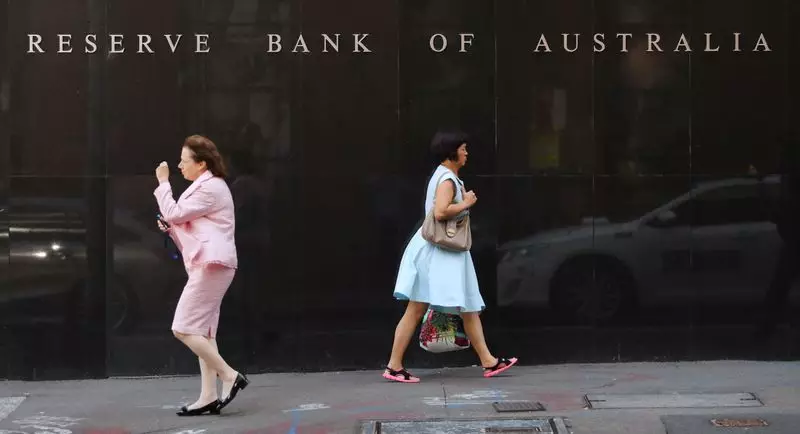Australia’s economic climate has been a subject of significant scrutiny as the Reserve Bank of Australia (RBA) recently concluded its last policy meeting for the year without altering the cash rate, maintaining it at 4.35%. While this decision was largely anticipated due to ongoing economic uncertainties, the RBA’s nuanced communication hints at evolving perspectives on inflation and economic health. The central bank’s acknowledgment that it has garnered “some confidence” in the direction of inflation marks a crucial pivot from its previously hawkish stance, embodying a subtle indication that it may consider easing monetary policy in the near future.
This juxtaposition of maintaining steady rates while cultivating optimism around inflation reveals the RBA’s delicate balancing act amidst the backdrop of global economic shifts and domestic growth challenges. The Australian dollar’s immediate reaction—a 0.8% decline—signals market sensitivity to these developments, suggesting that traders remain vigilantly attuned to the central bank’s insights and future trajectory.
At the heart of the RBA’s decision-making process lies the intricate interplay of inflation metrics. The recent slowdown in headline inflation to 2.8% marks a return to the target range, albeit influenced by temporary factors such as government rebates on electricity costs. On the contrary, core inflation consistently hovers at a stubborn 3.5%, raising red flags for policymakers who favor a more sustainable inflation trajectory.
The RBA’s decision to omit previous language that kept options open for rate adjustments reflects a more decisive posture. Analysts had speculated that core inflation levels are still too elevated for immediate cuts, emphasizing that the economic landscape requires careful monitoring. Interestingly, the board’s confidence in inflation trending downwards could galvanize market expectations for potential rate cuts in February, leading to a renewed sense of speculation among investors.
Recent economic data underscores the complexity of Australia’s growth trajectory. With the National Australia Bank reporting the lowest business conditions since late 2020, there is compelling evidence that the anticipated consumer spending rebound has yet to materialize. Consumers are reportedly prioritizing debt repayment over increased spending, a trend that complicates the RBA’s task of stimulating economic recovery.
Moreover, while the labor market remains resilient, buoyed by public sector job creation, wage growth remains tepid. This stagnation in wage performance could limit consumer spending power and exert downward pressure on inflation, thereby complicating the RBA’s goal of achieving its inflation target.
Given the conflicting signals from various sectors of the economy—the sustained strength in employment juxtaposed against weak consumer spending—analysts are closely watching the RBA’s decisions. Some experts assert that the bank’s recent dovish drift may pave the way for a rate cut as early as February, contingent on forthcoming economic indicators.
As we enter the new year, the RBA’s challenge will be to navigate through a potentially volatile economic landscape while maintaining a commitment to its inflation targets. The global context, particularly with the U.S. Federal Reserve signaling potential rate cuts, could further complicate Australia’s monetary policy.
The bank must weigh its options carefully, as any premature easing could impact inflation expectations and undermine the credibility it has cultivated over the past year. Nevertheless, as economic indicators continue to evolve, the RBA’s strategy may shift towards a more accommodative stance should the data suggest a deteriorating growth outlook.
The RBA’s recent meeting encapsulates a pivotal moment for Australian monetary policy as the central bank balances the dual mandates of fostering economic growth while controlling inflation. As stakeholders await the unfolding economic developments, all eyes will be on the RBA’s forthcoming actions and rhetoric to gauge the evolving landscape of Australia’s monetary policy.

